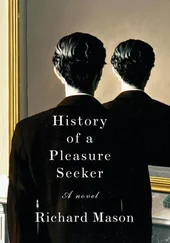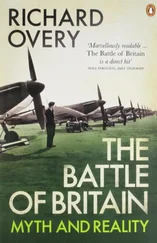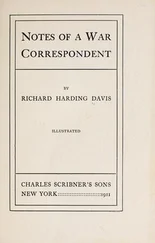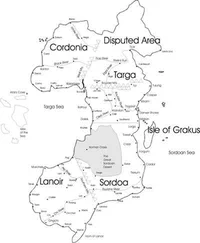It is tempting to assume that fighting is something humans are predisposed towards, either psychologically or biologically, but the archaeological record shows that there have been long periods when human populations exhibited very little or no evidence of violence. Studies of the prehistoric populations of the southwest United States across a 5,000-year period have found no evidence of warfare whatsoever – neither skeletons with tell-tale cuts or broken skulls, or arrow heads lodged in them, nor evidence of stockade defences around the first small villages or settlements. Even after the population became more sedentary and cultural distinctions more marked, the archaeological evidence suggests that there was no organized violence for a further half a millennium. Only with a sharp change in environmental conditions and rising population levels from around 1100 to 1300 CE does evidence of warfare suddenly emerge in the burial record, with the skeletal remains of massacred groups or skulls broken open by weapons.
A rather different pattern emerges in the archaeology of northeast America. Here, evidence from around 5000 BCE of bone damage, weapon traces in skeletons and defensive ramparts shows that warfare seems to have been endemic, only to die out once settled communities were constructed. There are only scant traces of violence for the next 2,000 years; then, at some point after the turn of the first millennium CE, violence suddenly manifests itself on a large scale, evident in the discovery of a pit in South Dakota containing the skeletons of almost 500 massacred men, women and children. Clearly there are important environmental, social or cultural explanations for why humans choose to fight rather than collaborate, or find non-violent resolutions of conflict. The manifestations of violence in prehistoric communities across the Old World are similarly ambiguous. Evidence in pre-state Egypt shows that people were killed using arrows or spears; at Gebel Sahaba in Egyptian Nubia, more than 40 per cent of the burials in a cemetery dated to 12000 BCE have multiple injuries from weapons. In a Stone Age cave in Germany, the decapitated skulls of thirty-four men, women and children have been discovered, each head broken in by stone axes. In Europe, there is evidence of violence well before settled agricultural communities, which suggests that early nomadic cultures were as likely to be violent as the later, more sedentary ones. Yet here, too, can be found long periods in the archaeological record that show few if any signs of organized conflict or mass homicides.
The fact that violence between human communities over the past 20,000 years has been sporadic and at times uncommon suggests that warfare must have historical explanations rather than evolutionary ones. The early evidence of violence says little about whether these conflicts were battles as they are understood today, or mere raids for slaves and booty, ambushes to prevent encroachments on food or water sources, or ritualized acts of limited or mock violence like that still evident among tribal communities in early twentieth-century New Guinea. The idea of battle as a way of organizing violence in a disciplined way with a particular aim and a specific enemy is, according to the historical record, common only to particular cultures and across particular global regions. A study of the 2,000 years from the second millennium BCE to around 500 CE – the period when battles entered the historical record – has shown that battles were rare in most civilizations and that they were concentrated geographically in a swathe of territory from Mediterranean Europe through the Near East to Southern Asia. Out of 288 conflicts worthy of the name ‘battle’, 94 per cent occurred in this region, including 73 battles in civil wars. China records only two major battles over the same time span. The idea of a battle as a distinct event with its own choreography and rules seems to have been an invention of pharaonic Egypt. It was widely imitated in the Near and Middle East, and taken up with enthusiasm by the ancient Greeks and the Romans.
This is the form of battle that is familiar today and clearly it came to be widely imitated in the millennia that followed. That is not to say that all battles are equal. The exact ways in which battles have been organized and conducted over the past 2,000 years closely reflect specific cultures and prevailing historical conditions, for which anthropology is as useful as history. There have been periods when efforts were made to avoid battle, even when large armies were available. Late medieval Europe saw infrequent battles if deterrence, threats or political cunning could avoid them; eighteenth-century Europe saw a preference for manoeuvre warfare, in which armies were moved around as if on some giant chessboard with the aim to checkmate an opponent rather than force a real fight. Early modern warfare in Southeast Asia was limited by the desire to avoid battle while finding ways of seizing slaves or workers, though this did not exclude occasional conflicts of extreme violence. The refusal to accept battle, even when two armies are only miles apart, as Octavian did at Actium to frustrate Mark Antony, is highly ritualized and relies on what is regarded as culturally acceptable to both sides. Different cultures have evidently defined battle differently, from the sacred ritual surrounding Greek warfare to the utilitarian view of battle in modern warfare.
The one common denominator for all the battles identified from the historical record is the dependence on state or sub-state forms of organization that are capable of raising an army, seeing to its provisioning, and imposing sufficient levels of discipline (with the incentive of loot or the threat of punishment) to ensure that the rank and file remain in place long enough to fight. The capacity to raise an army does not mean a settled and powerful civilization. American Indian tribes could collaborate sufficiently to bring an army of warriors together long enough to achieve what was needed; the Mongol tribal units integrated by Genghis Khan into a completely militarized society represented a loose federation, but it was organized enough to divide men into divisions, battalions and platoons and to provide camels, oxen and carts to move the arrows and the few provisions that the steppe soldiers needed. The other requirement was money, and warfare played a central part in the creation of complex coinage and taxation systems – the cost of warfare was likely to exceed what could be supplied by the potential field force or navy on its own behalf. As battles became more complex with the addition of elaborate equipment and the need for large supplies of ammunition, food or weapons, Western societies came to dominate global warfare, though not exclusively so. They developed states and industrial economies capable of raising the technological and organizational threshold of conflict and applying more managerial values to the battlefield. The result since the eighteenth century was the onset of widespread asymmetric warfare between the West and the rest, though the odds could sometimes be overcome if traditional communities gained access to the new weaponry or if they could surprise their opponent. Increasingly, the only way to conduct modern battle was to borrow the Western way of war, as the Japanese navy demonstrated to devastating effect at Pearl Harbor. Even in this case, old and new mingled together as the bushido values of the Japanese military made surrender impossible, leaving some soldiers fighting to the death in the Pacific War armed only with swords.

© Musee de la Marine, Paris, France/J.P. Zenobel/The Bridgeman Art Library
Читать дальше













